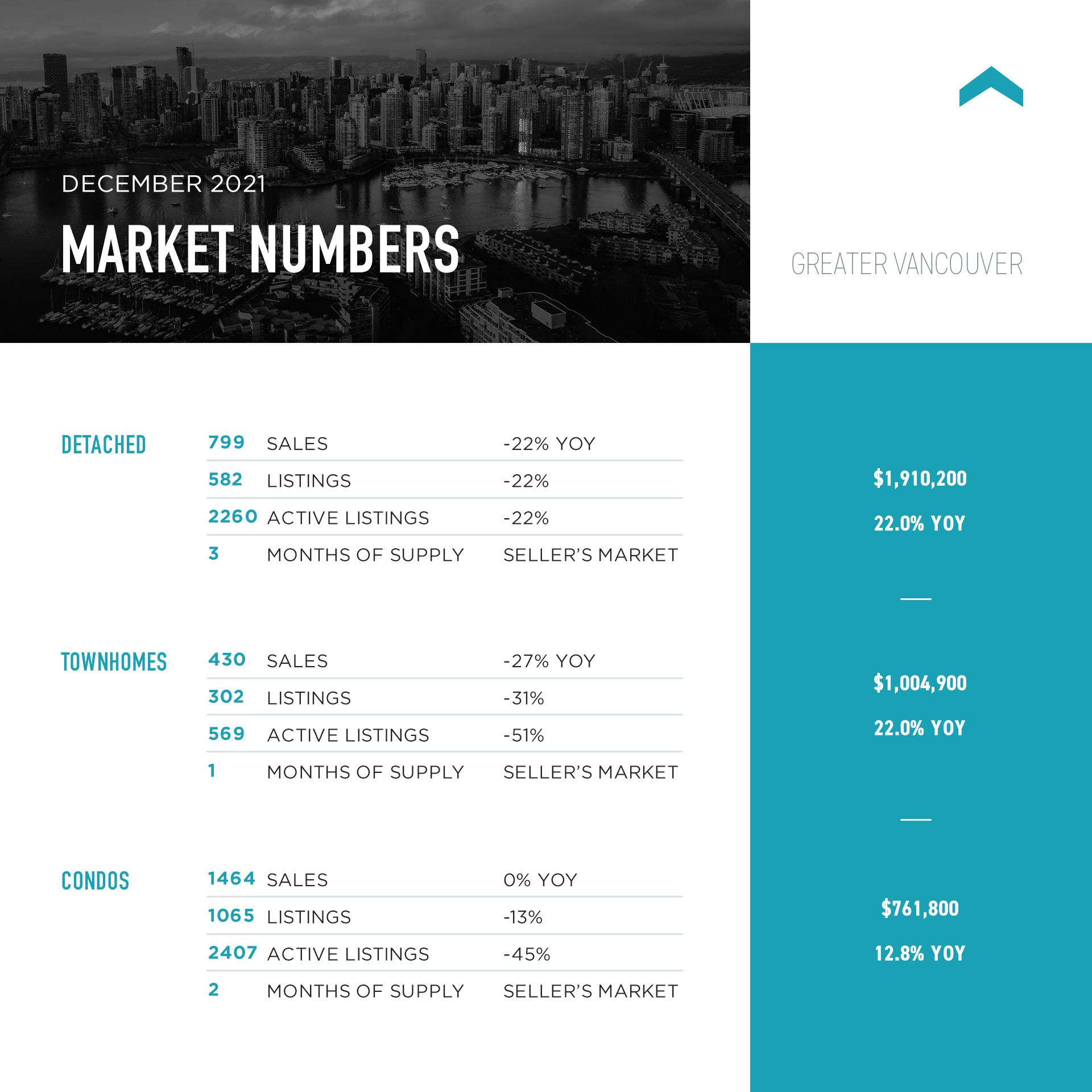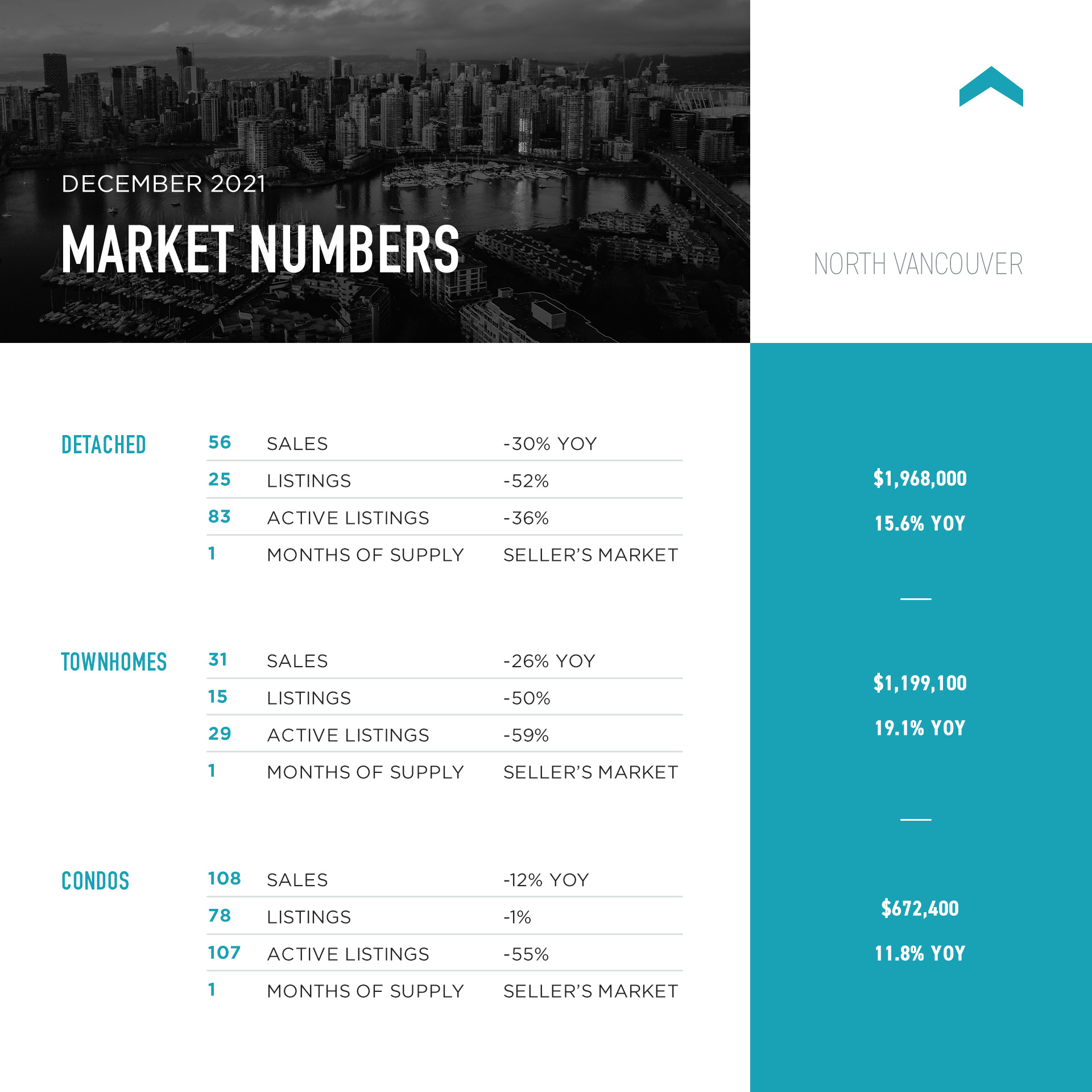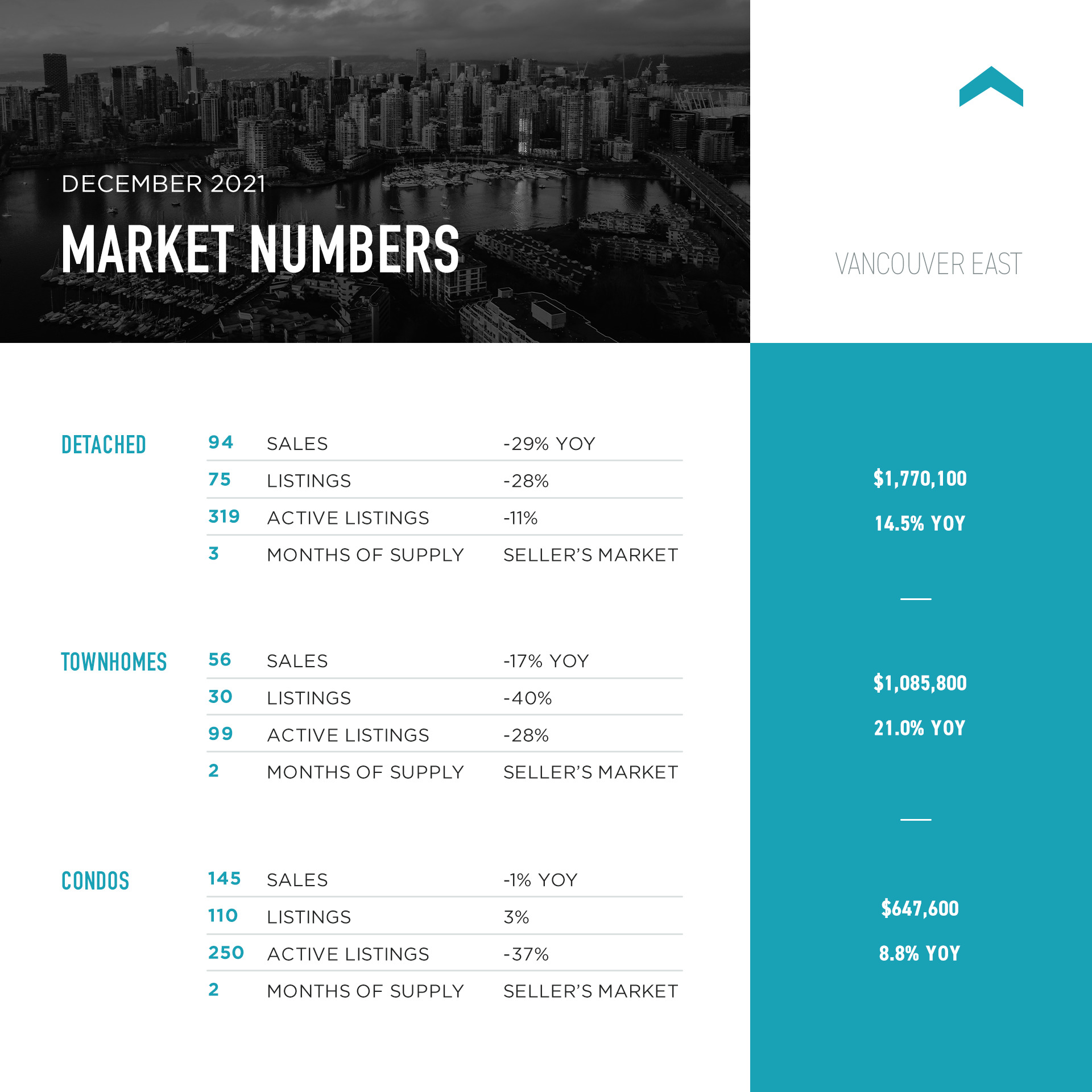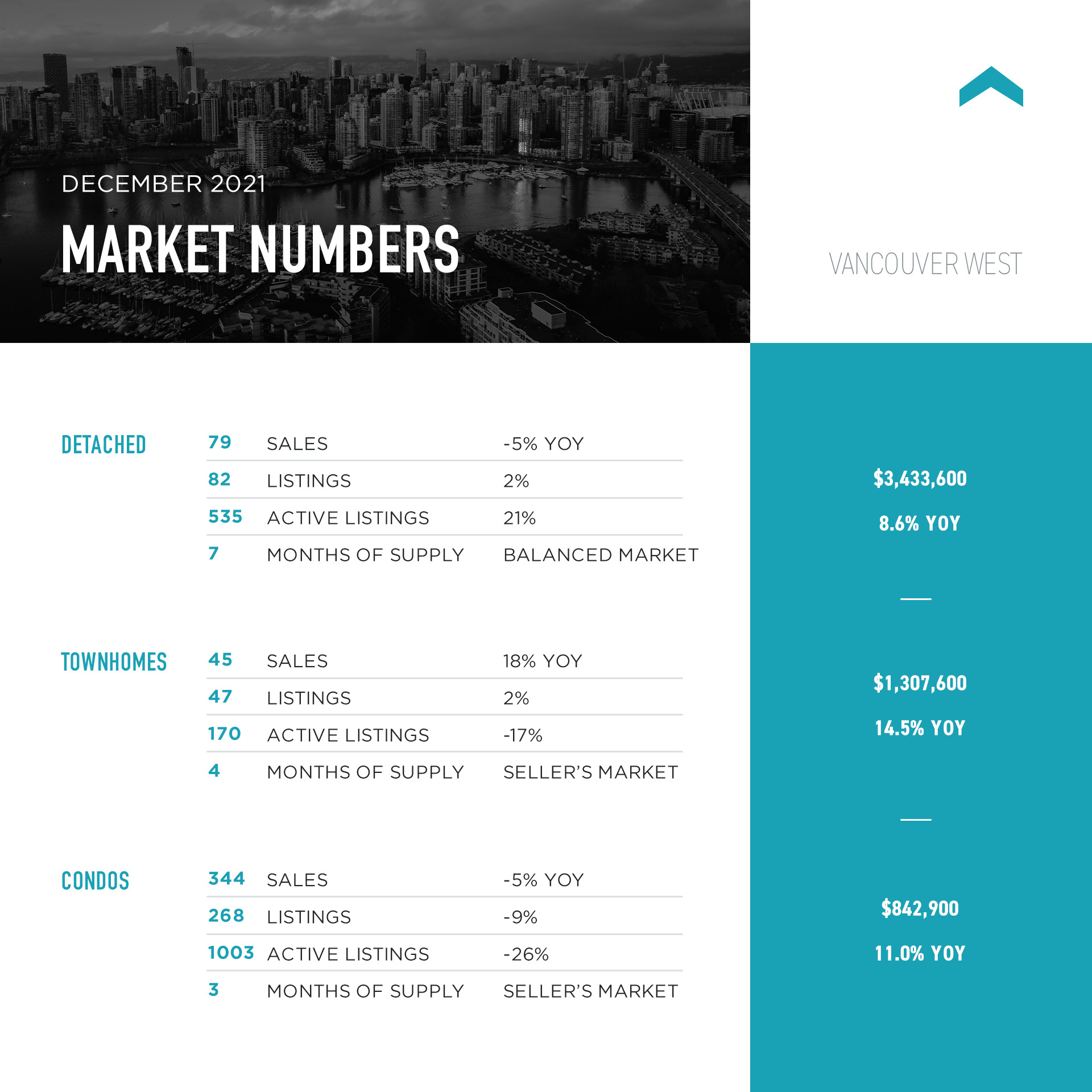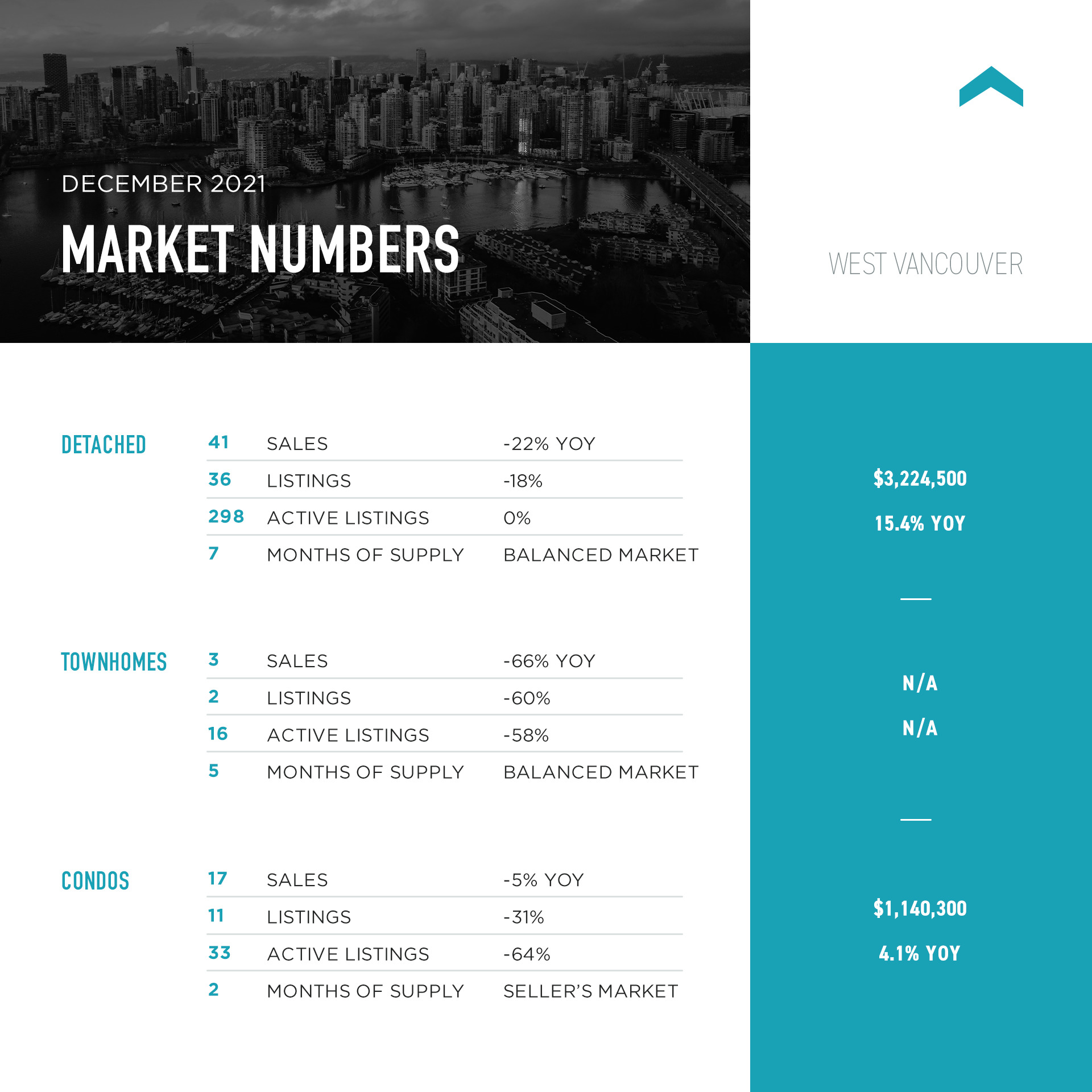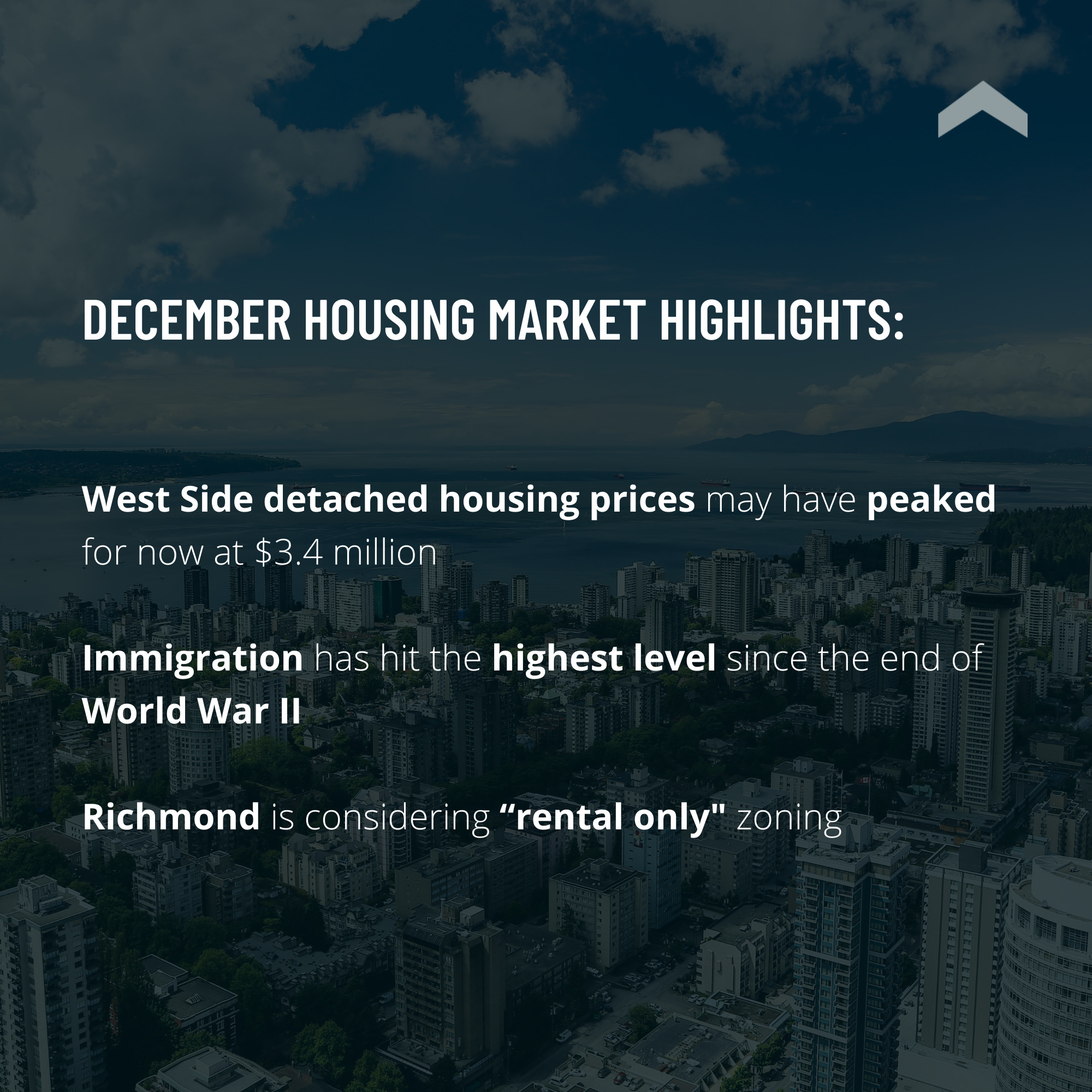Brace for an interesting year in the housing market
As the Metro Vancouver housing market comes off a record sales year, we are entering what could be the most interesting 12 months this region has ever seen. The term ‘interesting’ can be seen in relation to the age-old curse of “may you live in interesting times,” but we believe it will also be a blessing because the blinders that have obscured some real estate realities will be ripped away in 2022.
The first expose will be that Canada does not have the supply or the political gumption to provide the housing needed for the biggest surge in immigration this country has ever seen.
The second expose will be that the federal government continues to look at ways to tax homes in Canada as evidenced by a recent CMHC study to add an annual tax on homes valued above $1M, will they slap a capital gains tax on the sale of principal residences next, despite its strenuous denials?
The final reality that every home buyer, seller and renter in Metro Vancouver will face is that the cost of housing here is never going to come down, despite the barriers to demand that every level of government has thrown up over the past 10 years.
It is up to the private market – that is you, me and everyone else who aspires to homeownership – to prepare and prosper in a future characterized by a low supply of housing, greater property taxation and accelerating land and property values.
It won’t be easy, but Metro Vancouver has never been an affordable market. Yet it has remained Canada’s leading residential environment for decades. There is nowhere better to live in Canada and it certainly has no match when it comes to achieving real estate success.
Let’s look at immigration. According to Statistics Canada, this country absorbed 123,000 immigrants in the third quarter of 2021 alone: the highest level for any quarter since 1946, at the end of World War II. For all of 2021, Canada welcomed 403,000 new residents. To put this in perspective, the United States brought in only 300,000 immigrants for all of last year. Due to immigration, Canada now has the fastest-growing population of all G7 Nations.
If former immigration surges are any indication, up to 30% of newcomers to Canada will immediately or eventually – usually within two years – locate to B.C. and 95% of these will come to Metro Vancouver.
But the supply of housing in Metro Vancouver has fallen to record low levels and, due primarily to local governments, construction of new homes is not keeping pace with the current population, let alone meeting the needs of a hundred thousand newcomers every year.
Considering the lowest we have seen the number of Greater Vancouver active listings go in the last 30 years was 6,200, to hit below 5,000 it truly astonishing. Criticize the supply side discussions all you want but a fundamental flaw in the Metro Vancouver and many other real estate markets that we are experiencing right now is a significant lack of homes. Demand side measures clearly are not the long-term answer. At some point there needs to be real effort to increase supply and allow it to be increased in a meaningful way. And yes, the right kind of supply. We can’t keep wishing for it, there needs to be real work behind any kind of resolution to this issue.
As of December 1, 2021, only 6,000 more homes had started construction in Metro Vancouver than in the same period a year in 2020. Townhouse construction increased by just 98 units; and starts of detached houses fell by 300 homes. The only big increase was in apartments, but 30% of the 17,745 units started in 2021 were rentals, not strata homes.
This is despite a federal housing ministry pronouncement back in January 2021 that “We have a rock-steady focus on increasing the supply of housing in Canada.”
Of course, it is local municipalities that really decide how many homes will be built. And that is where the problem lies. Not to belabour the point, here is a snapshot of some recent for Metro Vancouver development non-decisions.
Vancouver: In 2016 the Grandview-Woodland Community Plan was approved, and the late and iconic Vancouver architect Bing Thom presented plans for the anchor development, his last big proposal, The plan now has been scaled back to 438 secured rental units, including 93 units at below-market rates, and 215 strata residential units, all across from the Broadway-Commercial SkyTrain hub. After three presentations and revisions over four years, the proposal has now been sent for future public hearings. “We have not received rezoning approval,” a developer spokesperson said in December 2021. “We have no idea when it will come.”
As of December 1, 2021, the City of Vancouver had seen total starts of less than 5,000 homes for the year, just 1,500 more than a year earlier, and 90% of 2021 starts were apartments. Only 135 new strata townhomes have started in Vancouver in the past two years.
North Vancouver District. The development of the Maplewood Town Centre was included in the 2006 official community plan. Five years ago, a plan was submitted by two major developers for 535 homes, including 80 below-market rentals. In December 2021, the entire proposal was voted down by District council.
A proposal to develop 420 housing units, half of them rentals at below market rates, in Lynn Canyon has been submitted three times to District council starting nearly two years ago. As of December 2021, it was referred to another round of public hearings.
As of December 1, 2021, North Vancouver District has posted just 423 housing starts, down from 611 in the same period in 2020. Only 17 townhouses were started in 2021.
West Vancouver: Council recently voted down an eight-story condo building with seven strata units. It would have been the first-ever zero emission, mass-timber housing development in the district.
Burnaby: First presented under the official community plan in 1988, the Bainbridge Urban Village Community Plan and the Lochdale Urban Village Community Plan, meant to increase density around the Sperling SkyTrain station and Hastings Street, began consultations in 2020.The Latest update indicates that final plan to council sometime this year, subject to more public hearings.
A summary of the amazing numbers:
Greater Vancouver: Total housing sales in December were 2,737 – down from 3,492 (22%) in November 2021, down 23% from October 2021 and down 13% from December 2020, due totally to a lack of listings.
For all of 2021 sales totaled 43,999 homes, a 42.2% increase from the 30,944 sales recorded in 2020, and a 4% increase over the previous all-time sales record set in 2015. Last year’s sales total was 33.4% above the 10-year sales average.
The composite benchmark price for all residential properties in Metro Vancouver ended the year at $1,230,200. This was a 17.3% increase compared to December 2020. Both detached home and townhome benchmark prices leaped 22% last year, while condo apartment prices increased 12.8% from year earlier.
The price increases are being fueled by the housing shortage, and the shortage is because of rising prices. The benchmark price of a detached house in Vancouver, Richmond, West Vancouver and Whistler is now more than $2 million. It is over $1.8 million in North Vancouver, Port Moody and most of Burnaby, and has reached $1,756,700, up nearly 30% from a year ago in the Lower Mainland. Sticker-shocked home owners are reluctant to list their home because they don’t know where they can afford to move to. New listings in December were down 51% compared to November 2021 and 20% lower than in December 2020.
Meanwhile, buyers are eager to purchase in a market where the average detached house is increasing in value by $35,000 per month. The result is multiple offers with December’s sales-to-new-listing ratio at a startling 138%, up from 87% in November 2021 and 127% in December 2020. Basically, every new listing sold in December and the total inventory was further whittled down. In some communities, the inventory of homes for sales in now measured in days, not months.
The bottom line: buyers will continue to struggle in 2022. We will see a rush of new listings in January and into the spring, despite COVID conditions. But given the hole we are starting from; it won’t be enough. Immigration has hit record levels. A large supply of housing is absolutely vital to meet the needs of a growing population and our expanding economy.
Fraser Valley: Home sales in the Fraser Valley in 2021, with 27,692 transactions, blew past the previous annual record of 23,974 sales set in 2016 and were 39% higher than in 2020. Unlike Greater Vancouver, the Fraser Valley also saw a rush of new listings, with 35,629 added – the second highest on record and 12.4% more than in 2020, but demand quickly ate up the supply.
In December 2021, 1,808 homes sold second only to December 2020’s record‐setting 2,086 sales. New listings in December were 1,278. By month’s end, however, the active inventory finished at 1,957 units, the lowest in 41 years. The year ended with detached house prices up 39% from a year earlier at a benchmark of $1.5 million; townhouse prices up 32.9% to $765,800; and condo apartment prices 25.3% higher at $549,200.
Vancouver Westside: We may be seeing peak prices, at least through the next few months, for detached houses right now on the Westside of Vancouver, with December’s benchmark at $3,433,600. Detached house prices are up 8.2% from a year ago, but have been declining steadily for the past six months. The Westside was the only sub-market where detached house prices were actually lower, down 0.4%, in December than five years earlier. For those who see the Westside as a bellwether market, this could be a harbinger for detached house prices. Just 79 detached houses sold in December, down from 100 in November 2021 and 84 in December 2020, in part a reaction to a low supply. With only 82 new listings of houses added in the month, December’s sales-to-new listing ratio was 96%. More listings would have boosted sales, but one wonders if price resistance is in play. Total Westside housing sales reached 468 in December, down 28% from a month earlier and 4% below December of last year. Total listings in December were down 54% compared to November 2021 and down 6% compared to December 2020. The action is now dominated by condo apartment sales, which reached 344 transactions in December to post a sizzling 128% sales-to-listing ratio, despite benchmark condo prices rising to $842,900. The townhouse inventory is close to vanishing: there were 47 new listings in December and 45 sales; driving the median townhouse price to $1,650,000, up about $340,000 from a year earlier.
Vancouver East Side: It takes a few minutes to drive from the heart of the Westside to the centre of Vancouver’s East Side but the short journey was a $1.7 million migrations for a December house buyer. The benchmark house price on the East Side as 2021 ended was $1,770,100, almost exactly half the price of a Westside house. This is perhaps the widest price-to-proximity gap in the Lower Mainland. It helps explain why nearly 1,800 East Side houses sold in 2021, compared to 1,210 on the Westside and why the benchmark East Side detached house price increased 23.9% in the past year while it increased just 8.6% on the Westside. The East Side saw the sales-to-listing ratio for detached houses hit 125% in December, showing the price pressure will likely increase going into 2020. East Side condo apartments may offer the best deal in Greater Vancouver for those seeking some level of affordability. The median East Side condo price in December was $618,500, lower than in Burnaby, the North Shore or Coquitlam and about $200,000 less than on the Westside. East Vancouver, however, is also seeking a housing shortage, with total active listings at year-end of 690 homes, down from 921 in November.
North Vancouver: Despite all the handwringing about rising home prices, BC Assessment data shows that demand is driving prices even higher in prime neighbourhoods. For instance, assessment values for homes on the exclusive Dollarton waterfront and in Grousewoods in North Vancouver were up 30% over the past year, while they increased just 16% in more affordable Norgate and Pemberton. Across all of North Vancouver, the composite home price in December was up 14.2% from a year earlier to $1,273,100, while the typical detached house price was $1,968,000, up 15.6% year-over-year. New Listings in December were down 58% compared to November 2021 and down 26% compared to December 2020.Month’s supply of total residential listings is down to 1 month with the sales-to-listing ratio at a stunning 163%.
West Vancouver: Total housing sales in December were down 23% from a month earlier to 62 transactions, as new listings dropped 67% compared to November 2021, and 25% from December 2020. There is now about a six-month supply – 371 active listings – on the market, but the December sales to listing ratio was running at 124%. The benchmark detached house price is $3,224,500, up 13.1% from December of 2020. The big gain is in Ambleside, where the typical house price rose an average of 34% over last year, according to B.C. Assessment.
Richmond: Richmond is considering ‘rental-only zoning’ of 60 rental properties to discourage the potential development of strata homes. The targeted properties are all rentals, including 17 housing co-operatives. This could discourage development and cause values to fall for land where only rentals are permitted, if developers caution. City staff is recommending the move. This is something for property owners to keep an eye on. Meanwhile, Richmond total housing sales were up 13% year-over-year- in December to 481 transactions, while new listings dropped 9% in the same period. The sales-to-listing ratio is at 140%, which has translated into multiple offers and the composite home price increasing 17.4% from a year ago to $1,132,600.
Burnaby East: Total housing sales in December were 32 – down 3% from November 2021 and down from 22% compared to December 2020 New listings in December were down 44% compared to November 2021. Month’s supply of total residential listings is still at a 1 month’s supply, with a sales-to-listings ratio of 145% compared to 85% in November 2021 and 216% in December 2020. The composite home price is up 13%, year-over-year, to $1,127,600.
Burnaby North: The benchmark detached house price jumped to $1,802,600 in December, up 17.3% from a year earlier, reflecting intense demand in the face of lower inventory across every sector. Total new listings in December were down 45% compared to November 2021 and down 27% compared to December 2020. Month’s supply of total residential listings is down to 1 month as the sales-to-listings ratio rose to 130% compared to 84% in November 2021.
Burnaby South: The detached house market edged closer to the $2 million club in December, as benchmark prices edged up 1.9% from a month earlier to $1,868,000, the highest house price in Burnaby. Total housing sales, however, dropped 17% from November to 225 units, likely due to a severe shortage. Active listings were at 257 at month end compared to 574 at that time last year and 358 at the end of November. The total sales-to listings ratio is a blistering 138% compared to 100% in November 2021 and 103% in December 2020.
New Westminster: The benchmark detached house price in the Royal City in December was $1,393,800, up 21.5% from a year earlier, but prices are higher in some neighbourhoods, based on recent BC Assessment values. A property n Queensborough has been assessed at $3,009,000 and at least 10 other properties in New Westminster topped $2.5 million, according to assessment values released January 4. Detached house prices will likely increase, because the sales-to-listing ratio hit 183% in December, among the highest in Metro Vancouver, because only 12 new listings hit the market in the month. Total listings of all properties in December were down 53% compared to November 2021 and down 9% compared to December 2020, but the sales-to-listing ratio is 164%.
Coquitlam: Total housing sales fell 25% in December from a month earlier, to 216, but a lack of inventory drove the composite benchmark home price up 2% in the same period to $1,162,400. Detached house prices were up 25.1% from a year earlier to $1,616,200, while townhouse prices shot up 23% to $904,500. Total new listings for all properties in December were down 52% compared to November 2021 and down 27% compared to December 2020, as the sales-to-listing ratio hit 140%.
Port Moody: This market is experiencing some of the highest price increases in Greater Vancouver. The benchmark condo price in December was $767,600, up 16.9% from year earlier and the typical detached house sold for $1,948,800, 24% higher than in December of last year and by far the highest price in the Tri-Cities.
Total sales in December were down 33%, year-over-year, to 52 units, and active listings fell to just 97 homes, compared to 155 at the end of 2020. The result is a sales success ratio of 133%, meaning virtually every new listing is selling. The bottom-line numbers, there were only19 townhouses and 22 apartments available for sale.
Port Coquitlam: For now, this is the most affordable of the Tri-Cities, with a composite benchmark home price of $988,800 in December. There are no big housing developments planned for 2022, but a number of civic projects, including a downtown upgrade and a civic centre makeover are underway. More housing supply is badly needed, though, as the total inventory is down to two-weeks and the sales-to-listing ratio is a sizzling 162% with 4 townhouses and 17 apartments available. An idea of the price direction in Port Coquitlam is the December sale of a 1.2-acre rental building downtown that sold for $18.2million.
Ladner: Total housing sales in December were 21 – down 49% from November 2021, and 39% below December 2020. Active Listings were at 33 (with only 1 townhouse and 3 apartments) at month end compared to 66 at that time last year and 50 at the end of November. New listings in December were down 70% compared to November 2021 and down 60% compared to December 2020. The composite home price has surged 25% from a year ago to $1,103,000 and the typical townhouse price is up 26% to $826,100.
Tsawwassen: Detached house prices are up 28.2% from a year ago and rose 3.3% from a month earlier to reach $1,525,300, understandable as total housing sales are running at sales to listing ratio of 215%. Active Listings were at 68 at month end compared to 176 at that time last year and 97 at the end of November.
Pitt Meadows: Total Units Sold in December were 33 – up from 32 (3%) in November 2021, down from 34 (3%) in October 2021, up from 26 (27%) in December 2020, up from 27 (22%) in December 2019; Active Listings were at 29 at month end compared to 47 at that time last year and 37 at the end of November; New Listings in December were down 36% compared to November 2021, up 20% compared to December 2020 and up 115% compared to December 2019. Month’s supply of total residential listings is still at 1 month’s supply and sales to listings ratio of 117% compared to 72% in November 2021, 130% in December 2020 and 207% in December 2019. The shocking numbers: 16 detached homes, 8 townhouses and 2 apartments available.
Maple Ridge: Total Units Sold in December were 159 – down from 198 (20%) in November 2021, down from 187 (15%) in October 2021, down from 214 (26%) in December 2020, up from 130 (22%) in December 2019; Active Listings were at 143 at month end compared to 371 at that time last year and 235 at the end of November; New Listings in December were down 50% compared to November 2021, down 33% compared to December 2020 and up 4% compared to December 2019. Month’s supply of total residential listings is still at 1 month’s supply and sales to listings ratio of 145% compared to 90% in November 2021, 129% in December 2020 and 123% in December 2019.
